|
Did you know that the #1 tool most people use for cleaning bacteria from their teeth, gums, and mouth, already contains millions, possibly trillions, of bacteria? If you leave your toothbrush in the bathroom and never disinfect it, you’d better read this article.
In his book, Why Your Toothbrush May Be Killing You Slowly, James Song, a biochemist from Wisconsin University, suggests that a range of serious health problems, including heart disease, stroke, arthritis and chronic infections, could be linked to unhygienic toothbrushes. Further research by Manchester University found that the average toothbrush contained around ten million germs, including a high percentage of potentially fatal bacteria such as staphylococci, streptococcus, E. coli and candida. Other studies have shown that over time, a single toothbrush can be the breeding ground for trillions of bacteria specimen. There are many ways these bacteria latch on to toothbrushes: Use from an infected user, spray from a flushing toilet, a damp environment that allows the bacteria to breed and grow, and just a general lack of oversight. Think about it for a moment; would you leave your eating utensils in the bathroom, use them over and over again, and never wash them? As bad as it sounds, overcoming this potential time bomb is not complicated. Below are Dr. Moorhead’s 5 simple tips to keep your toothbrush bacteria free.
If you have any questions or would like further advice on disinfecting your toothbrush, please contact us using one of the methods below, or ask us at your next appointment.
1 Comment
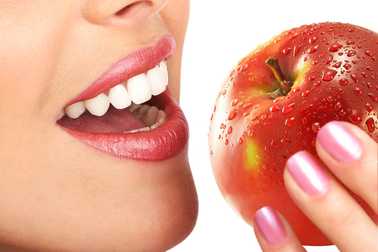 One of the most commonly misunderstand concepts of good oral hygiene is that one should avoid sugar at all costs. Why? Well, sugar causes tooth decay. Yes, that is true, but did you know that most diet sodas are one-tenth as strong as battery acid? How good do you think that is for your teeth? You guessed it, not at all! Furthermore, once tooth enamel has become weakened by sugar and acid, we see a lot of damage caused by hard candy or other tough foods. Throw in the double-whammy of the fact that most people with a diet high in sugar and diet sodas are not getting enough of the right nutrients, and you’ve created an environment that will very likely lead to cavities. Here’s what happens: You get up in the morning and brush your teeth before leaving for work. On the way to work, you stop for a cup of coffee, maybe a muffin. If you’re like most people, you don’t have or take the time to brush your teeth immediately. What’s happening in your mouth is that that food leaves a film that becomes bacterial in nature, also known as plaque. The next thing you know it’s time for lunch. You grab a sandwich, maybe some chips, and a diet soda. When the plaque that has been building up all morning comes into contact with these new sugars, (from the sandwich and chips), acid is produced which attacks the enamel on your teeth. This process takes about 20 minutes, and, if nothing is done, the attack can eventually result in tooth decay. The more often you eat and the longer foods are in your mouth, the more damage occurs. Now imagine that you skip the step of the bacteria and sugar and go straight to the acid attacking the enamel. That’s what you’re doing when you drink diet sodas. Even if no plaque is present, for each sip of diet soda, the acid gets to eat on your enamel for 20 minutes. Getting the picture? So what’s the answer? Here are 8 suggestions for good dental-diet habits.
If you have further questions about how your diet affects your dental health, please contact us at Flemingsburg Dental Care. You’re seeing commercials on television that talk about a product’s ability to reverse cavities. So can these products really work? And what works best? First a little bit of background. A tooth actually develops a “cavity” when bacteria eats through the outer enamel layer of the tooth and gets into the softer dentin layer that lies below the enamel. In your mouth, these demineralized areas, or “pre-cavities” look like opaque white or brown spots, as shown in the picture below. We’ve known for several years that you can use fluoride to reverse a pre-cavity, but it requires repeated regular applications of fluoride to accomplish this reversal. Two of the best ways to accomplish this are with application of fluoride varnishes or the daily use of custom fluoride trays at home. Fluoride varnish is a highly concentrated temporary dose of fluoride. The varnish holds fluoride close to the tooth surface for a longer period of time than other concentrated fluoride products. The varnish, usually tooth colored, is applied by a dental professional. When the varnish is used repeatedly, it can actually reverse the pre-cavity by remineralizing the tooth. 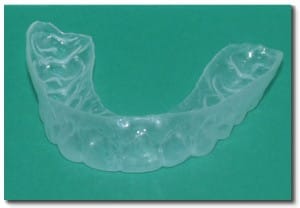 Custom fluoride trays look similar to bleaching trays or whitening trays, but are specifically designed to cover your teeth completely at the gum line. They are fabricated to fit directly over your upper and lower teeth, and are used to hold a few drops of concentrated fluoride on the teeth. For about the cost of having one cavity filled, the custom fluoride trays provide you with a way of doing a professional strength fluoride treatment every day. To use the custom fluoride trays, we recommend the following regimen:
There are some newer products that are even more effective at reversing pre-cavities. A product called MI Paste can reverse the pre-cavities and often reverse the opaque white spot caused by the pre-cavity. MI Paste works by releasing calcium and phosphate ions into your tooth enamel. It can be brushed on, or can be worn in the custom fluoride trays already mentioned. There are many effective tools for fighting cavities before they start. Give us a call today so that we can help give you the smile you want. Of the three ways you can lose teeth, periodontal disease – also referred to gum disease or gum and bone disease – causes the most tooth loss in adults. Periodontal disease is a silent disease until it reaches advances stages, so without a routine dental exam, you could have it but not know it. Of the half of adult’s that don’t go to the dentist regularly, 80% have serious periodontal disease by age 40. The word “periodontal” describes the structures around that tooth that give it support – the gingival (gums), the bone, and the fibers in-between. Signs that show you may have periodontal disease include:
First, let’s take a look at the stages of periodontal disease. This first photo shows an example of healthy gums. The gingival is light pink and flat, and the diagram shows the bone in-between teeth with proper support. Gingivitis is the first stage periodontal disease. Shown in the next photo, gingivitis is a completely reversible disease. The gums are red and swollen, but there is no damage to the bone support. In this third photo, an early stage of periodontitis is shown. You can see the gums pulling away from the teeth as they are losing their bone support. The teeth are sometimes more sensitive where the roots are partially exposed, but often there are no symptoms even at this stage of the disease. Symptoms usually don’t develop until severe bone involvement, so shown here, when the teeth become loose and sore. By this time, it’s often too late to save the involved teeth. To check the health of your gums, your dentist gently slides a measuring probe under your gums. Measurements are made several places around each tooth to show where the gums attach to your tooth, and if there is any bleeding or pus present. If the periodontal support around your tooth is in good shape, the farthest that the probe should be able to measure is 3 mm, or 1/8 inch. This is the farthest that a toothbrush and floss can clean under the gums adequately. A measurement of 4mm or greater demonstrates evidence of periodontal disease. Dentists refer to these areas as “periodontal pockets.” Other signs of periodontal disease include bleeding gums and receding gums.
The actual cause of periodontal disease is bacteria that live in these periodontal pockets. In areas this far below the gums, a breeding ground develops for particular types of bacteria called anaerobes, a type of bacteria that thrives where there is no oxygen. These bacteria release toxins that slowly cause destruction of the bone and periodontal fibers that support your teeth. Periodontal disease can be treated if it is caught early enough. Much like a patient with high blood pressure, a patient with periodontal disease cannot be completely “healed” from the damage that has already been caused, but the disease can be controlled so that further damage doesn’t occur. Treatment for periodontal disease will be covered next week. If you’re concerned you may have periodontal disease, why not call us today to schedule an examination. Click here to learn about a special offer for our web readers. You can reach us at Flemingsburg Dental Care at 888-733-3163  Periodontal Disease - Before and After Treatment Periodontal Disease - Before and After Treatment Periodontal disease is the number one cause of tooth loss in adults. Also known as “gum and bone disease”, it acts much like termites on the foundation of your house. And like termites, the disease is silent until it is very advanced. These are photos of one of our patients before and after periodontal treatment. In the left photo, notice the swollen, red gums and the thick tartar on the teeth. When she first came to our office, this patient had periodontal pockets that extended up to 6 mm (1/4”) under the edge of her gums. In addition to improving her appearance, her breath also dramatically improved. Bacteria thrive in the deep periodontal pockets. The bacteria and its by-products create plaque, and the plaque eventually absorbs calcium from the mouth to form calculus, or in lay terms, tartar. Calculus leaves a very rough surface on the root of the tooth, and even allows the bacteria to imbed itself onto the root surface. Treatment for periodontal disease is primarily aimed at removing the bacteria that cause the disease. One of the primary treatments for periodontal disease is root planing, where the hard deposits of calculus are removed from the root surface, then the root surface is smoothed to remove infected tooth structure. Unlike an ordinary cleaning appointment, root planing is performed in a very detailed fashion under the gums. Root planing can be done comfortably, either by numbing the treated area, or with a product called “Oraqix” that delivers topical anesthetic gel gently into the periodontal pockets to numb the gums without injections. To keep patients even more comfortable, we recommend they take a non-steroidal medication like Advil or Aleve before the root planing, which results in a dramatic decrease in inflammation and discomfort from the procedure. Our office is one of a few in the United States that has ozonated water available to aid in treatment during root planning. In it’s July 2008 edition, the Journal of Contemporary Dental Practice stated that “ozonated water strongly inhibited the formation of dental plaque…(showing that) ozonated water is useful in reducing infections caused by microorganisms present in dental plaque.” Improved home care is also a must in treating periodontal disease. Different tooth brushing techniques are taught to provide additional gentle massage for the infected gums, and daily use of floss or floss substitutes also greatly improve healing. When periodontal pockets are especially deep, a referral to a periodontist, a specialist in gum surgery, may be needed to improve the chances of saving teeth. Because your toothbrush and floss cannot reach further than 3mm (1/8”) below the gums, patients with periodontal disease usually require more frequent cleanings. Only a dental professional can reach these deep areas. By allowing your dental hygienist to perform this gentle cleaning every three months, harmful bacteria are disturbed before they can cause additional damage.  Doctors from Yale & Case Western Reserve released a study that discovered new bacteria that may be responsible for most premature labor. The Discovery Channel report says that this previously undiscovered bacteria usually found in the mouth may be responsible for up to 80 percent of early pre-term labors. Most importantly, the research indicates that preterm births can be prevented by improved oral hygiene and by the use of targeted antibiotics. We’ve known for several years now that pregnant women with gum disease problems were at a very high risk for premature labor. Obstetricians and insurance companies have been encouraging expectant mothers to see their dentist at least by their second trimester to have their teeth cleaned and treat any problems with swollen gums. There is also interesting news to share with new parents. We’ve all seen studies that show how breast feeding helps infants be more healthy. Regarding dental decay on teeth of a newborn, research shows that breast feeding not only does not cause cavities, but it actually deposits calcium and other useful nutrients onto the enamel. It has helps prevent decay! In our community, we still see too many children that have very high decay rates. We learned about seven to eight years ago that if either parent has a high decay rate when their child’s first teeth erupt, their child will have a much greater chance of always having decay problems. All of us understand that parents are going to be in close contact with their baby – including kisses and hugs. The close contact causes the bacteria in a parent’s mouth to get spread to their child. So if the parent has bacteria that have caused lots of cavities, that bacteria gets spread to the child. This information shows how important it is for parents to see their dentist – for their child’s sake. |
Articles
All
AuthorDr. Moorhead and his team write about dental news, and answer patient questions. Archives |

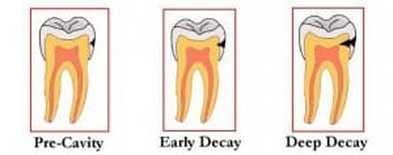
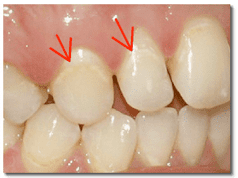
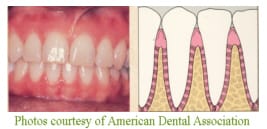
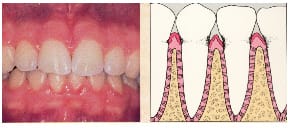
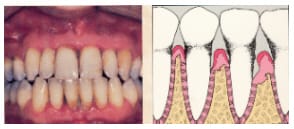
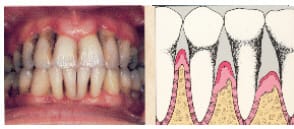
 RSS Feed
RSS Feed